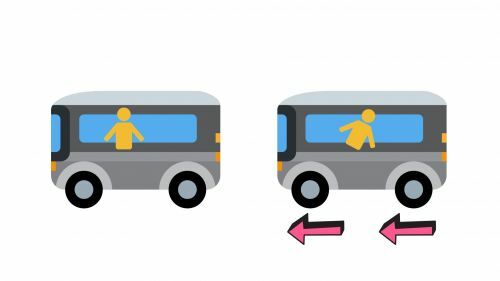According to Newton's first law, also known as law of inertia, bodies tend to remain at rest or in motion with constant speed if no force is applied to them.
This is the first of the three laws of Isaac Newton on the movement of bodies, which were published in 1687 in his book Mathematical Principles of Natural Philosophy.
Newton elaborated the law of inertia based on studies carried out by Galileo Galilei, which found the tendency of objects to remain at rest or at constant speed from the observation of the orbits of the planets.
See the statement of this law:
Every body remains in its state of rest or of uniform motion in a straight line, unless it is forced to change that state by forces applied to it.
the law of inertia
Isaac Newton's law of inertia states that bodies remain at rest or in uniform rectilinear motion if no external force acts on them.
This law, therefore, considers two situations: a body at rest and a body in uniform rectilinear motion.
body at rest
This case is more logical and easier to understand. When a body is at rest, it is stationary and its velocity is zero.
Let's use as an example a ball at rest on a flat surface. If someone kicks this ball, it will move because a force has been applied to it.
This ball, however, will not remain in motion forever, as the ground exerts a frictional force on it, which causes its speed to decrease until it comes to rest again.
Body in uniform straight motion
When a body is in uniform rectilinear motion (MRU) it means it is in motion with constant speed it is in a straight line and will continue to move if no external force acts on it.
This would happen in a situation where there is no other frictional force acting on the moving body.
When a body is in MRU, its velocity is constant and therefore its acceleration is zero - acceleration is the quantity that determines the speed variation. However, if an external force acts on the body, it will gain acceleration and its velocity will change.
Using the ball as an example for this case, we assume that it is positioned on a smooth surface that does not offer any friction. There is also no friction with the air, that is, the resultant of all forces on the ball is zero.
If someone kicks this ball, it will move into uniform rectilinear motion and will remain in motion with constant velocity until another force is applied to it.
This case is less intuitive, as on planet Earth there is always some force being applied to bodies, such as gravity, air resistance and friction with surfaces.
Learn more about Newton's laws.
resultant force
The resulting force term is the result of sum of all forces applied to a body.
For example, when a person kicks a ball, there are several forces acting on him: the applied force by the kick, the friction of the ball with the ground, gravity and the resistance offered by air particles.
To calculate the amount of force acting on that body, it is necessary to add up these forces, which are vectors, that is, have intensity, direction and sense.
If a ball is at rest on a surface and a person applies a force from left to right and another person applies a force of the same intensity from right to left, these forces will be nullified and the ball will remain in rest.
understand more about strength.
Inertia
The inertia of a body is measured by its pasta. This means that the greater the mass of a body, the greater its inertia and, therefore, the greater the net force needed to change its resting state or MRU.
For example, if a person tries to push a 6-pound wooden box, he will find it quite easy to get it out of the state of rest. Now, if the box weighs 200 kilos, the difficulty will be much greater.
understand more about inertia.
Practical examples of Newton's first law
- When a bus is moving at 100 km/h, people inside the vehicle are also moving at that speed relative to the outside of the vehicle. If the driver brakes sharply, people will be thrown forward, as they tend to keep moving at 100 km/h.

- When a bus is at rest, people in the interior are also at rest. If the driver accelerates suddenly, their bodies are pushed back as they tend to remain at rest.

See also the Newton's second law and the Newton's third law.

